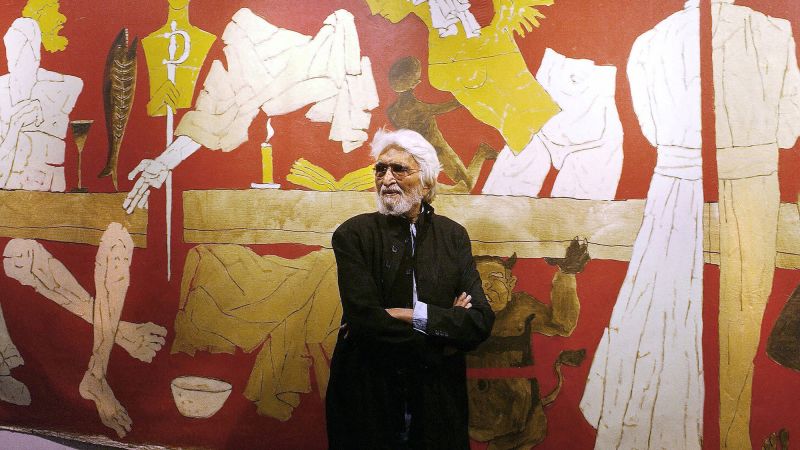For the complex legacy of M.F. Husain, one of 20th-century India’s most important artists, this year has been a tale of two auctions.
In March, one of the late painter’s monumental depictions of rural life, the 14-foot-long “Untitled (Gram Yatra),” became the most expensive modern Indian artwork ever to go under the hammer. The $13.75 million price tag almost doubled the previous record, with onlookers at Christie’s in New York bursting into spontaneous applause.
Three months later, an auction of 25 long-lost Husain paintings in Mumbai was far less celebratory. Police patrolled the premises and erected barricades at the auctioneer’s office after a right-wing Hindu nationalist group warned of “strong public agitation” if calls to cancel the sale — due to Husain’s “vulgar and obscene” portrayals of sacred figures — were ignored.
The auction went ahead without incident. But the contrasting moods exemplified the painter’s status as one of Indian art’s most celebrated but controversial names. As if to further underscore his polarized reputation, this year also saw a Delhi court order the seizure of two “offensive” Husain paintings, while, earlier this month, the Qatar Foundation announced plans for an entire museum dedicated to his work (Qatar had given Husain citizenship after he fled India, in 2006, fearing for his safety).
Four of 25 rediscovered Husain paintings — whose auction prompted threats from a Hindu nationalist group — on show at Pundole Gallery in Mumbai ahead of the controversial sale. Raju Shinde/Hindustan Times/Getty Images
Known for bold, colorful explorations of folk and pop culture, Husain was lauded as a pioneer of Indian modernism and often dubbed “India’s Picasso.” His paintings played with icons in all their forms, from Mother Teresa and Indira Gandhi to Bollywood stars and mythological figures from literary epics.
The artist’s portrayals of nude Hindu deities, however, stand accused of offending religious sentiments — a reaction his supporters believe is exacerbated by his Muslim heritage. As a result, his later life was dogged by protests, legal action, death threats and an arrest warrant. Despite later being exonerated by India’s supreme court, he died in self-imposed exile, in London, in 2011.
Continue Reading on CNN
This preview shows approximately 15% of the article. Read the full story on the publisher's website to support quality journalism.
